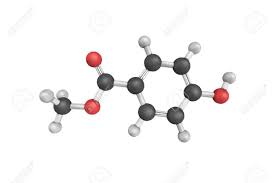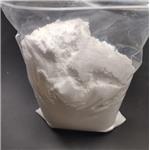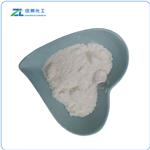Correlational studies of Methylparaben
Nov 15,2019
Methylparaben has been used as a preservative in the food, cosmetic, and pharmaceutical industries for over 50 years. The chemical formula for methyl paraben is C8H8O3. It is also found naturally in fruits like blueberries where it has antimicrobial activity.

Uses
Methylparaben is commonly used as a fungicide in Drosophila food media. To Drosophila, methylparaben is toxic at higher concentrations, has an estrogenic effect (mimicking estrogen in rats and having anti-androgenic activity), and slows the growth rate in the larval and pupal stages at lower concentrations.
Metabolism
Methylparaben is completely absorbed through the skin or after ingestion, and it is hydrolyzed to para-hydroxybenzoic acid, and metabolites are rapidly excreted in the urine. There is no evidence of accumulation. It is on the FDA generally regarded as safe list.
Correlational studies
Acute toxicity studies in animals indicate that methylparaben is practically non-toxic by both oral and injectable routes. It has not been shown to be teratogenic, carcinogenic, mutagenic or embryotoxic.
It does not appear to be irritating when used topically, although some people may show cross-sensitivity if allergic to local anesthetics that are metabolized to para-aminobenzoic acid. Cases of local contact dermatitis have been reported.All parabens have similar structure to estrogen. Studies conducted in the early 2000s located traces of parabens in breast tumors, but evidence has not linked parabens with breast cancer.
The Cosmetic Ingredient Review (CIR) reviewed the safety of methylparaben, propylparaben, and butylparaben in 1984 and concluded they were safe for use in cosmetic products at levels up to 25%. Typically parabens are used at levels ranging from 0.01 to 0.3%.
References
[1] US Department of Labor. OSHA. Safety and Health Topics. Methylparaben. Accessed 8/17/2012 https://www.osha.gov/dts/chemicalsampling/data/CH_254445.html
[2] FDA’s SCOGS database; methylparaben; SCOGS-Report Number: 8; Accessed 8/17/2012. https://www.accessdata.fda.gov/scripts/fcn/fcnDetailNavigation.cfm?rpt=scogsListing&id=210
[3] Soni MG, Taylor SL, Greenberg NA, et al. Evaluation of the health aspects of methyl paraben: a review of the published literature. Food Chem. Toxicol. 40:1335-73. Accessed 8/17/2012 https://www.sciencedirect.com/science/article/pii/S0278691502001072
[4] US Food and Drug Administration. Cosmetics. Parabens. Accessed 8/19/2012. https://www.fda.gov/cosmetics/productandingredientsafety/selectedcosmeticingredients/ucm128042.htm
- Related articles
- Related Qustion
- Methylparaben:a preservative product Dec 11, 2023
Methylparaben is a synthetic compound used as a preservative in cosmetics, skincare, and pharmaceutical products.
- Methylparaben in Cosmetics Oct 20, 2021
Methylparaben is used to preserve the formula of a skincare product and is therefore not directly beneficial to the state of your skin's health.
L-glutamic acid, also known as glutamic acid, is one of the many components of proteins. Like its fellow amino acid glutamate, it is produced naturally by the body; however, it is a different type of amino acid.....
Nov 15,2019Biochemical EngineeringPotassium phosphate is used to treat or prevent hypophosphatemia (low blood levels of phosphorus). Potassium phosphate is sometimes added to intravenous (IV) fluids given to people who cannot eat or drink anything.....
Nov 15,2019APIMethylparaben
99-76-3You may like
- Methylparaben
-

- $0.00 / 25Kg/Drum
- 2024-05-17
- CAS:99-76-3
- Min. Order: 1KG
- Purity: 99%
- Supply Ability: 500mt/year
- Methylparaben Methyl Paraben
-

- $10.00 / 1kg
- 2024-05-17
- CAS:99-76-3
- Min. Order: 1kg
- Purity: 99.5
- Supply Ability: 10 ton per month
- Methylparaben
-

- $48.00/ kg
- 2024-05-14
- CAS:99-76-3
- Min. Order: 1kg
- Purity: 99%
- Supply Ability: 5000kg/week




